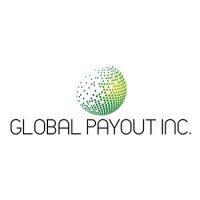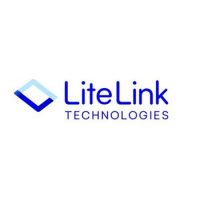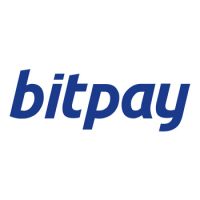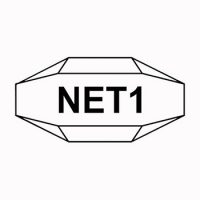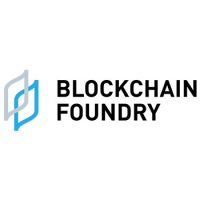Blockchain Press Releases
NEAR Foundation and Polygon Labs join forces to build Zero-Knowledge Solution for WASM Chains

Leading ZK researchers and WASM experts to develop a zero-knowledge prover for WASM blockchains available via Polygon CDK
- The zkWASM collaboration leverages Polygon Labs’ groundbreaking zero-knowledge R&D with NEAR Foundation’s WASM expertise, positioning this ZK solution at the forefront of the Web3 market
- zkWASM will eventually be one of three provers available for developers who choose to build with Polygon Chain Development Kit (CDK), an open source codebase for launching ZK-powered L2 chains for Ethereum
- NEAR Foundation becomes a core contributor to Polygon CDK
- This pioneering research initiative will pave the way for greater trustless interoperability across Web3, including between NEAR and the Ethereum ecosystem
LISBON, Portugal, Nov. 8, 2023 /PRNewswire/ —NEAR Foundation, the non-profit that supports the growth and development of the NEAR ecosystem, and Polygon Labs, a software development company for leading Ethereum Layer 2 scaling architecture, announce a strategic collaboration to build zkWASM, a zero-knowledge (ZK) prover for WASM blockchains. With Polygon Labs’ authority in ZK scaling technology and NEAR’s deep WASM runtime expertise, the zkWASM prover is positioned to lead the market among other wasm provers when it launches next year. Both teams shared the announcement today at the NEAR ecosystem’s annual flagship conference, NEARCON, in Lisbon.
This announcement brings together two leading protocol teams to build a more secure, interoperable Web3 ecosystem. A zkWASM prover positions NEAR Protocol closer to Ethereum and enables WASM chains to tap into Ethereum liquidity. In the future, through an in-development interoperability layer, chains will also be able to access shared liquidity in a unified ecosystem of CDK-deployed chains, including alternative layer-1s, EVM layer-2s, and WASM chains. Using a zkWASM prover, WASM chains will be able to settle transactions efficiently and cost-effectively with maximum security guarantees, unlocking the full potential of zero-knowledge for the multichain future of Web3.
“We are proud to collaborate with NEAR on this exciting research initiative to further drive the development and adoption of ZK technology. The zkWASM prover maximizes developer customizability, which means projects will be able to select from a number of provers when building with CDK, whether that’s launching or migrating an EVM chain, or building a WASM chain for closer Ethereum alignment and access to liquidity,” said Sandeep Nailwal, co-founder of Polygon.
A zkWASM prover will be an upgrade for NEAR validators–instead of the hard work of validating a shard, validators will instead be able to generate a single zero-knowledge proof, greatly simplifying validator requirements. This means better scalability and increased decentralization for the NEAR Protocol.
“We are very excited to work with Polygon Labs to bring all the benefits of zero-knowledge proofs not just to NEAR but all of Web3,” said Illia Polosukhin, co-founder of NEAR Protocol. “NEAR is integrating more with Ethereum by innovating in new research frontiers, and the shared expertise of NEAR and Polygon will expand the ZK landscape and defragment liquidity across chains. Creating and using the zkWASM prover will also improve the scalability and decentralization of the NEAR L1.”
The zkWASM prover is now in active development and is expected to launch next year.
About NEAR Foundation:
NEAR foundation is a Switzerland-based nonprofit foundation whose mission is to enable community driven innovation to benefit people around the world. One of its core areas of focus is the NEAR ecosystem, which includes a fully operational decentralized Blockchain-based platform for building decentralized applications.
NF carries out its mission, primarily through the allocation of support and resources to other nodes in the near ecosystem, rather than via direct intervention or operations.
Unlike many organizations of its type, NF’s ultimate goal is to minimize its own scope and footprint by continuing to divide functions and resources to the ecosystem; and support the development of decentralized infrastructure necessary for those ecosystem functions to operate in a self-sufficient manner. For more information visit the website.
About Polygon Labs:
Polygon Labs develops Ethereum scaling solutions for Polygon protocols. Polygon Labs engages with other ecosystem developers to help make available scalable, affordable, secure and sustainable blockchain infrastructure for web3. Polygon Labs has initially developed a growing suite of protocols for developers to gain easy access to major scaling solutions, including layer 2s (zero-knowledge rollups and optimistic rollups), sidechains, hybrid chains, app-specific chains, enterprise chains, and data availability protocols. Scaling solutions that Polygon Labs initially developed have seen widespread adoption with tens of thousands of decentralized apps, unique addresses exceeding 220.8 million, over 1.18 million smart contracts created and 2.48 billion total transactions processed since inception. The existing Polygon network is home for some of the biggest web3 projects, such as Aave, Uniswap, and OpenSea, and well-known enterprises, including Robinhood, Stripe and Adobe. Polygon Labs is carbon neutral with the goal of leading web3 in becoming carbon negative.
If you’re an Ethereum Developer, you’re already a Polygon developer! Leverage Polygon’s fast and secure transactions for dApps you develop, get started here.
Website | Twitter | Developer Twitter | Telegram | LinkedIn | Reddit | Discord | Instagram | Facebook
CONTACT:
Georgia Hanias
[email protected]

Photo – https://mma.prnewswire.com/media/2267120/polygon_social.jpg
Logo – https://mma.prnewswire.com/media/2039011/NEAR_logo_Logo.jpg
![]() View original content:https://www.prnewswire.co.uk/news-releases/near-foundation-and-polygon-labs-join-forces-to-build-zero-knowledge-solution-for-wasm-chains-301978368.html
View original content:https://www.prnewswire.co.uk/news-releases/near-foundation-and-polygon-labs-join-forces-to-build-zero-knowledge-solution-for-wasm-chains-301978368.html

Blockchain
Blocks & Headlines: Today in Blockchain – May 22, 2025

The blockchain universe never sleeps. From pioneering cross-border payment systems in Central America to city-wide crypto strategies in New York City, today’s headlines reveal an industry maturing at breakneck speed. In this edition of Blocks & Headlines, we explore five landmark developments:
-
Guatemala’s Banco Industrial integrates blockchain for seamless cross-border remittances.
-
NYC Mayor’s Office unveils a comprehensive crypto and blockchain roadmap.
-
OSR Holdings, BCM Europe & Taekwondo Cooperative sign an MOU to launch the OSRH token.
-
Bybit’s “Chicken Trader” livestream—crypto meets poultry in the world’s first poultry-powered trading showdown.
-
FIFA taps Avalanche to build a dedicated blockchain for its NFT platform.
These stories underscore three key trends reshaping the ecosystem:
-
Institutional Adoption & Regulation: From national banks to municipal governments, legacy institutions are embracing decentralized technologies.
-
Tokenization & Community Engagement: Strategic partnerships are launching specialized tokens that bridge niche communities with global markets.
-
Innovative Use Cases: Whether gaming, entertainment, or live-stream events, blockchain’s versatility spawns ever-more creative applications.
Join us as we unpack the implications, weigh the opportunities, and forecast where these trajectories might lead.
1. Guatemala’s Largest Bank Integrates Blockchain for Cross-Border Payments
What Happened
Guatemala’s Banco Industrial, the country’s biggest financial institution, announced the deployment of a private‐permissioned blockchain network to streamline remittances from the U.S. into Guatemala City and beyond. The solution reduces settlement times from days to minutes, cuts fees by up to 60 %, and offers real-time traceability for senders and receivers.
Source: Cointelegraph
Analysis & Commentary
-
Financial Inclusion Boost: Remittances account for over 12 % of Guatemala’s GDP. By minimizing friction and cost, blockchain integration will extend financial services to remote communities reliant on diaspora funds.
-
Risk & Compliance: Permissioned networks allow Banco Industrial to retain AML/KYC controls, mitigating concerns around illicit flows. This hybrid approach demonstrates that enterprise blockchain can balance decentralization with regulatory rigor.
-
Regional Ripple Effects: Neighboring Central American banks are watching closely. Should Guatemala’s pilot succeed, we can expect a domino effect across El Salvador, Honduras, and Costa Rica—each seeking to capitalize on faster, cheaper cross-border rails.
Implications
Legacy banks worldwide should view this as a blueprint: private blockchains can coexist with existing compliance frameworks while delivering transformative user benefits. Early movers will capture remittance market share and cultivate fintech partnerships across the Latin American corridor.
2. NYC Mayor Unveils Ambitious Crypto & Blockchain Agenda
What Happened
New York City Mayor Eric Adams detailed his administration’s multi-pronged strategy to make NYC a global crypto hub. Key initiatives include:
-
A regulatory sandbox for crypto startups to pilot DeFi, NFTs, and token-based fundraising under city supervision.
-
Partnerships with CUNY and Columbia University for blockchain research and talent development.
-
Deployment of a blockchain-based public record system for land titles and business registrations.
Source: GovTech
Analysis & Commentary
-
Regulatory Harmony vs. Overreach: By offering a controlled sandbox rather than blanket deregulation, NYC signals a nuanced stance—encouraging innovation without sacrificing consumer protection.
-
Talent Pipeline: Academic partnerships aim to remedy the talent shortage plaguing blockchain firms. Local graduates trained in distributed ledger technologies (DLT) will feed startups, financial institutions, and government agencies.
-
Public Services on Chain: Land registries and business filings on blockchain promise greater transparency and fraud reduction. If scaled effectively, NYC could set a global standard for government-blockchain integration.
Implications
Other major cities—London, Singapore, Dubai—will feel pressure to match NYC’s playbook. Municipal leaders should prioritize sandbox frameworks and academia-industry liaisons to nurture homegrown crypto ecosystems.
3. OSR Holdings, BCM Europe & Taekwondo Cooperative Launch OSRH Token
What Happened
OSR Holdings, BCM Europe, and the Taekwondo Cooperative signed a strategic Memorandum of Understanding to co-develop the OSRH token, a blockchain-based digital asset aimed at supporting global Taekwondo practitioners. Features include:
-
Membership Rewards: Tokens earned through event participation, coaching certifications, and tournament wins.
-
Decentralized Governance: Athletes vote on sponsorship allocations and rule-change proposals via on-chain ballots.
-
Marketplace Integration: A dedicated NFT marketplace for Taekwondo memorabilia, from digital belts to highlight reels.
Source: PR Newswire
Analysis & Commentary
-
Niche Tokenization: OSRH token exemplifies the power of community-focused tokens. By aligning incentives with passion points—training, competition, governance—stakeholders gain ownership and engagement.
-
Governance Innovation: Athlete-driven decision-making on sponsorship and funding disrupts top-down federation models. This could democratize sports governance across disciplines.
-
Commercial Ecosystem: The NFT marketplace offers monetization channels for athletes and federations alike. Strategic royalties on secondary sales ensure sustainable funding.
Implications
Other sports federations and niche communities should explore token models that blend rewards, governance, and commerce. Successful launches will hinge on clear utility, user education, and regulatory compliance in key jurisdictions.
4. Bybit Presents “Chicken Trader”: The World’s First Poultry-Powered Trading Showdown
What Happened
Cryptocurrency exchange Bybit debuted “Chicken Trader,” a live-streamed event where two contestants trade crypto pairs—and manage live chickens—to earn “Egg Points.” Viewers can stake on their favorite trader, earning NFTs and token rewards based on performance.
Source: PR Newswire
Analysis & Commentary
-
Gamification Meets DeFi: Chicken Trader’s fusion of live-stream engagement, staking mechanics, and NFTs exemplifies Web3’s playful ethos—turning trading into interactive entertainment.
-
User Acquisition Strategy: Bybit gamified acquisition funnels, leveraging viral social content to onboard nontraditional crypto audiences intrigued by the novelty factor.
-
Regulatory Tightrope: Combining staking with competition and livestock raises jurisdictional questions around gambling, securities, and animal welfare. Bybit must navigate diverse regulations to scale globally.
Implications
Other exchanges will replicate gamified formats to differentiate UX and grow communities. Yet long-term viability demands balancing flashy live-events with rigorous compliance, sustainable tokenomics, and authentic value for participants.
5. FIFA Taps Avalanche to Power Its NFT Platform
What Happened
Global soccer body FIFA selected the Avalanche blockchain to launch its official NFT marketplace, featuring digital collectibles—from World Cup highlights to player-card packs. Avalanche’s high throughput and low fees were cited as decisive factors.
Source: TradingView (via Cointelegraph)
Analysis & Commentary
-
Scalability & Sustainability: Avalanche’s consensus mechanism delivers sub-second finality and carbon-offset commitments, aligning with FIFA’s environmental pledges.
-
Fan Engagement: Tokenized highlights and limited-edition digital memorabilia expand revenue streams beyond broadcast rights, offering fans verifiable ownership and collectible provenance.
-
Interoperability: Avalanche’s growing DeFi ecosystem enables future integrations—staking fan tokens, launching prediction-market games, or embedding NFT rewards in FIFA’s mobile apps.
Implications
Major sports leagues and entertainment brands eyeing NFT forays will scrutinize Avalanche’s performance under FIFA’s global load. Blockchain platforms must prove they can handle spikes during marquee events—kickoff times, finals, transfer windows—while preserving UX and sustainability goals.
Conclusion
Today’s Blocks & Headlines illustrate blockchain’s multifaceted evolution:
-
Legacy institutions like banks and city governments are unlocking new efficiencies and transparency through private and public DLT networks.
-
Community-driven tokens are redefining governance and monetization in sports and niche domains.
-
Innovative engagement—from poultry-fueled trading spectacles to global soccer NFTs—demonstrates blockchain’s capacity for gamification, fan loyalty, and novel revenue models.
Yet with opportunity comes responsibility: scalable architectures must coexist with robust compliance; token economies require thoughtful design to sustain value; and regulators, academia, and industry must collaborate to craft frameworks that balance innovation with consumer protection.
As blockchain weaves deeper into finance, governance, entertainment, and sports, stakeholders who embrace strategic partnerships, prioritize user education, and invest in resilient infrastructures will lead the charge into Web3’s next frontier.
The post Blocks & Headlines: Today in Blockchain – May 22, 2025 appeared first on News, Events, Advertising Options.
Blockchain Press Releases
CM Global Services (CMGS) Secures Exclusive Multi-Year Logistics & Procurement Partnerships with Compass Mining and NovoMod
DENVER, May 22, 2025 /PRNewswire/ — CM Global Services LLC (CMGS) proudly announces its official designation as the exclusive logistics and procurement partner for Compass Mining Inc. and NovoMod LLC, two leaders in the Bitcoin mining and modular infrastructure sectors. These multi-year partnerships reinforce CMGS’s growing influence as the supply chain backbone powering some of the most advanced digital infrastructure projects in the world.
Founded with a mission to eliminate the bottlenecks and fragmentation that plague traditional supply chains, CMGS is a fully integrated logistics and infrastructure services firm specializing in Bitcoin mining services, data center development, and high-demand electrical infrastructure. From sourcing crypto mining machine parts and network hardware to coordinating the full deployment of large scale sites, CMGS is designed to scale with our clients and move at the speed they need.
For Compass Mining and NovoMod, CMGS serves as more than a vendor; we are an embedded partner, streamlining critical operations and bringing transparency to every stage of the infrastructure lifecycle. Our team leads:
- Global sourcing and procurement of critical components, from power distribution units (PDUs) and switchgear to Ethernet cables, breakers, and enclosures.
- Inbound logistics and Customs navigation, moving sensitive equipment efficiently across Asia, LATAM, and North America on time, on budget, and compliantly.
- Refurbishment and redeployment of crypto mining machines, ensuring optimal uptime, performance, and recovery value from aging or idle equipment.
- Infrastructure buildout support, including on-site coordination, material staging, labor oversight, and final commissioning of modular and large-scale mining sites.
By centralizing sourcing, logistics, testing, and deployment under one roof, CMGS is helping Compass Mining and NovoMod compress timelines, reduce operational overhead, and eliminate costly inefficiencies that historically slowed down crypto mining and infrastructure projects.
While our partnerships with Compass Mining and NovoMod are foundational, CMGS also supports a growing number of mining companies, original equipment manufacturers, and infrastructure developers behind the scenes. Quietly powering the supply chains of both public and private firms across the U.S., LATAM, and Asia. In a market where downtime is costly and speed is currency, CMGS brings industrial discipline, real-world experience, with timely execution.
CMGS covers the full supply chain lifecycle, including:
- Global logistics and freight management
- Strategic sourcing and vendor negotiations
- Crypto mining machine parts sales, sourcing, and testing
- Full-site infrastructure build outs
- Cleaning, repair, and redeployment programs
- Consulting for operational optimization and supply chain resilience
As the digital infrastructure landscape grows more complex, CMGS is positioned to be the silent engine behind the most ambitious operators, ensuring they have what they need, where they need it, exactly when it’s needed.
About CMGS
CM Global Services (CMGS) is a full service logistics and procurement company specializing in Bitcoin mining and high performance computing industries. CMGS helps clients source equipment, manage global freight, deploy infrastructure, and streamline operations across every stage of the supply chain. With a commitment to reliability, speed, and cost efficiency, CMGS enables miners and data center operators to scale smarter.
To learn more about CM Global Services visit cmglobalservices.io
Media Contact
BlocksBridge Consulting
[email protected]
View original content:https://www.prnewswire.co.uk/news-releases/cm-global-services-cmgs-secures-exclusive-multi-year-logistics–procurement-partnerships-with-compass-mining-and-novomod-302462858.html

Blockchain Press Releases
Bybit Presents “Chicken Trader”: The World’s First Poultry-Powered Trading Showdown Livestream

DUBAI, UAE, May 22, 2025 /PRNewswire/ — Bybit, the world’s second-largest cryptocurrency exchange by trading volume, is taking novel trading challenges to new heights with the announcement of the Chicken Trader special, an unprecedented livestream session where professional crypto traders will have their authority challenged by their own pet chickens.
Scheduled to air on May 23, 2025 at 8AM UTC, the first-of-its-kind spectacle will feature Dylon Lord of Entry, Crypto trader & host at Crypto Banter, and DaviddTechI, Crypto trader & Co-Founder at DaviddTech, two seasoned trading pros whose market fortunes will temporarily rest on the shoulders of their feathered advisors.
Highlights
- Chickens Calling the Shots: Each chicken will peck at different treats representative of various trading options to channel their instruction. Yielding the strategizing power to the beaks of the chickens, both traders will be asked to execute the trading decisions faithfully.
- Live PnL Showdown: The resulting profit and loss (PnL) percentage will be tracked real-time during the livestream—and promises to shock the traders and the audience.
- Predictions and Live Giveaways: The audience will share in a 1,000 USDT prize pool by voting and participating in the red packets giveaway.
The special edition at Bybit Live is for entertainment purposes only and does not constitute financial or investment advice. Participants should be mindful of the risks associated with crypto trading.
No animals are harmed in the process. Terms and conditions and usual disclaimers apply. The not-to-be-missed battle will go live on May 23, and users may subscribe to upcoming session on Bybit Live.
#Bybit / #TheCryptoArk
About Bybit
Bybit is the world’s second-largest cryptocurrency exchange by trading volume, serving a global community of over 70 million users. Founded in 2018, Bybit is redefining openness in the decentralized world by creating a simpler, open and equal ecosystem for everyone. With a strong focus on Web3, Bybit partners strategically with leading blockchain protocols to provide robust infrastructure and drive on-chain innovation. Renowned for its secure custody, diverse marketplaces, intuitive user experience, and advanced blockchain tools, Bybit bridges the gap between TradFi and DeFi, empowering builders, creators, and enthusiasts to unlock the full potential of Web3. Discover the future of decentralized finance at Bybit.com.
For more details about Bybit, please visit Bybit Press
For media inquiries, please contact: [email protected]
For updates, please follow: Bybit’s Communities and Social Media
Discord | Facebook | Instagram | LinkedIn | Reddit | Telegram | TikTok | X | Youtube

Photo – https://mma.prnewswire.com/media/2694099/Bybit_Presents_Chicken_Trader_The_World_s_First_Poultry_Powered_Trading_Showdown.jpg
Logo – https://mma.prnewswire.com/media/2267288/Logo.jpg
![]() View original content:https://www.prnewswire.co.uk/news-releases/bybit-presents-chicken-trader-the-worlds-first-poultry-powered-trading-showdown-livestream-302463077.html
View original content:https://www.prnewswire.co.uk/news-releases/bybit-presents-chicken-trader-the-worlds-first-poultry-powered-trading-showdown-livestream-302463077.html

-

 Blockchain7 days ago
Blockchain7 days agoBlocks & Headlines: Today in Blockchain – May 15, 2025 (BTC’s Push, Pi Network Fund, Stablecoin Levers, JPM Pilot, OKX × Man City)
-
Blockchain7 days ago
Wen Acquisition Corp Announces the Pricing of $261,000,000 Initial Public Offering
-
Blockchain6 days ago
Mercurity Fintech’s Subsidiary Grows Cross-Border Business Advisory Services with New Asia-Pacific Healthcare Client Engagement
-

 Blockchain6 days ago
Blockchain6 days agoSaudi Arabia Loan Aggregator Market Report 2025: Retail Digital Payments Hit 70% as Tech Adoption Transforms Saudi Financial Services – Competition, Forecast & Opportunities to 2030
-

 Blockchain6 days ago
Blockchain6 days agoBlocks & Headlines: Today in Blockchain – May 16, 2025
-

 Blockchain Press Releases4 days ago
Blockchain Press Releases4 days agoCoinW Unveils Industry-First Futures Protection Program:Instant Refunds Designed to Safeguard Traders
-

 Blockchain3 days ago
Blockchain3 days agoBlocks & Headlines: Today in Blockchain – May 19, 2025 | DoubleZero, Toobit, Story Protocol, Marco Polo, Argo Blockchain
-

 Blockchain Press Releases2 days ago
Blockchain Press Releases2 days agoHTX Launches Multi-Assets Collateral Mode for USDT-Margined Futures, Empowering Traders With Enhanced Capital Efficiency





